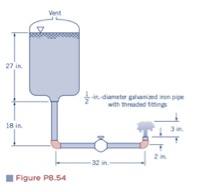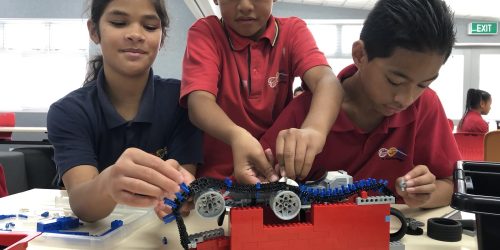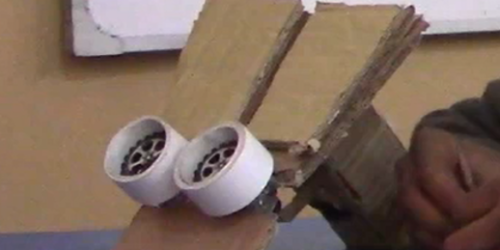by Jessica Swenson
The inspiration for my dissertation came from two sources: personal experience as an engineering student and courses developed at the Center for Engineering Education and Outreach (CEEO). As an undergraduate engineering student, I did everything a “good” student should. I went to class everyday, attended optional recitations, went to office hours, and completed every problem set. I worked with friends and classmates on all assigned work like faculty told us to during orientation and in classes. Yet, I had this gut feeling I didn’t understand everything, and my exam scores reflected that feeling. One of the reasons I chose to attend graduate school was to understand why I had that gut feeling, and to ask how other students could be enabled to build deeper understanding in their core engineering courses.
At the beginning of my doctoral work, there was a meeting at the CEEO about the first year robotics course taught by Dr. Ethan Danahy. In the meeting, we agreed there was a certain “magic” this course had that inspired students to go above and beyond the requirements of the course and push their technical knowledge to make a project work. I began to investigate this course, wondering how the engagement in learning that students demonstrated during out of class work in this course could be translated to other engineering courses.
For my dissertation, I focused on core courses where undergraduate students learn engineering science knowledge. Ten of these courses are required for a degree in mechanical engineering at Tufts. While there are many opportunities to learn during these courses, I decided to examine what students were required to do outside of their course and find moments of interaction with conceptual knowledge during their completion of their assignments. The two courses I choose to focus on were Control Systems and Fluid Mechanics.
Using video of students working on their homework together, I analyzed six homework sessions utterance by utterance to understand what the students were doing. Overall, I found students were mostly just trying to get their work done – or task producing. In a few instances, we found students asking questions and engaging in conversation to construct knowledge.
| Course | Group | Task Production Utterances | Knowledge Construction Utterances |
| Control Systems | Group 1 | 273 | 33 |
| Fluid Mechanics | Group 2 | 571 | 0 |
| Fluid Mechanics | Group 2 | 496 | 7 |
| Fluid Mechanics | Group 3 | 523 | 20 |
| Fluid Mechanics | Group 4 | 539 | 77 |
| Fluid Mechanics | Group 4 | 741 | 355 |
I also interviewed seven students who participated in the video recorded homework sessions to understand what they thought they were doing during the homework sessions and understand what they thought about learning engineering. Students have substantial and complex ideas about what contributes to their development of engineering knowledge. For example, some students understand the privileged place of mathematical problem solving in engineering education, but they also believe that carrying out mathematical procedures only in service of completing well-defined problems will not completely prepare them for their jobs as engineers. Students expressed a need for more complex, real-world tasks to better prepare them for their future careers. Students also recognized the value in sense-making and discussing concepts with their peers (knowledge construction). My research is only the beginning of forming a better understanding how undergraduate students learn engineering science knowledge. I hope to continue this work in my future research career.




